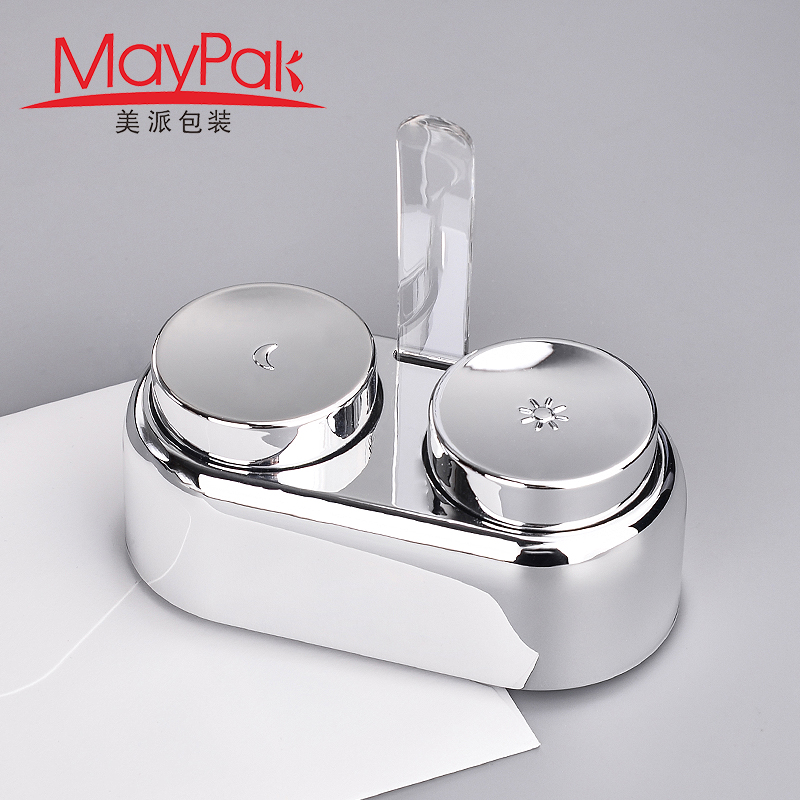1. Overview of electroplating
Electroplating is a process in which a thin layer of other metals or alloys is plated on the surface of some metal or other materials using the principle of electrolysis. The electroplating process can prevent metal oxidation (such as rust) and improve the wear resistance, electrical conductivity, reflectivity, corrosion resistance (copper sulfate, etc.) and aesthetics of the parts. Many coins also have electroplating on the outer layer.
Electroplating layers are generally thin, ranging from a few microns to tens of microns. Through electroplating, decorative protective and various functional surface layers can be obtained on mechanical products, and it can also repair wear and processing errors.
2. The process of electroplating
Basically as follows:
(1) Connect the coated metal to the anode, or add the soluble salt of the coated metal to the bath;
(2) The object to be electroplated is connected to the cathode;
(3) The anode and cathode are connected by an electrolyte solution composed of the positive ions of the coating metal;
(4) After the direct current power supply is applied, the metal of the anode will release electrons, and the positive (metal) ions that generate metal ions into the electroplating solution are reduced (to obtain electrons) into atoms at the cathode and accumulate on the surface of the cathode.
3. Different electroplating needs and functions
(1) Copper plating: used for primer to improve the adhesion and corrosion resistance of the electroplated layer. Copper is easily oxidized, and after oxidation, the patina can no longer conduct electricity.
(2) Nickel plating: used for primer or appearance to improve corrosion resistance and wear resistance. In modern technology, the wear resistance of nickel plating exceeds that of chromium plating. Note that many electronic products no longer use nickel as a primer, mainly because nickel is magnetic, which will affect the passive intermodulation in the electrical performance.
(3) Silver plating: In addition to decoration, it can improve the contact resistance of conductive materials. Silver has better properties, is easy to oxidize, and conducts electricity after oxidation.
(4) Palladium plating: Nickel can cause dermatitis. The European Union has long rejected the import of nickel-containing jewelry. Palladium is the best nickel substitute. Palladium is a rare, shiny silver-white metal. It is a kind of precious metal, and its price is one hundred times higher than that of nickel. Because palladium is expensive and expensive, only thin palladium electroplating is generally done in China, with a thickness of 0.1~0.2μm, which is used as an anticorrosive decorative coating and silver discoloration prevention layer on cupronickel. If the palladium layer is too thick (over 1 μm), cracks are likely to occur.
(5) Gold-plating: real gold component, in addition to decoration, can also improve conductivity. Although gold has the most stable chemical properties, it is also the most expensive.
(6) Rose gold plated: reddish gold, very popular in women’s accessories in recent years. Rose gold actually adds copper to the gold to make the gold a little red. The following figure shows the comparison of the working electroplating colors of 4 kinds of zinc alloys.
(7) Imitation gold / imitation rose gold: Because the price of gold plating is too high, imitation gold has also appeared in the market, so that products with low prices can reach the color of gold.
Imitation gold, in fact, is just brass, and there is no gold component. Brass is easy to oxidize, so it is necessary to cover a protective layer on the imitation gold plating, generally using varnish (Lacquer). Imitation rose gold is copper-plated and polished. Varnish is a kind of glue paint. After the workpiece is coated, it does not feel as good as real gold plating, but the cost price can be reduced a lot.
4. Common problems and causes of electroplating
(1). Foaming
Reasons: There are many possible reasons for blistering in electroplating. The following reasons will cause blistering: (1) Improper preparation of electroplating solution; (2) Improper specific gravity of catalyst (sodium cyanide); (3) Unclean surface cleaning; (4) Red The copper is not well laid; (5) the baking temperature is too high.
(2). Zinc alloy electroplating pits
Reasons: (1) The oil stains on the surface of the product are not cleaned up, which makes it difficult to deposit oily surface coatings; (2) There are too many impurities in the electroplating tank.
(3). Scratches
Reason: Generally, it is caused by poor operation after electroplating, and the electroplating alone will not cause scratches. For example: (1) Employees accidentally scratched when knocking or hanging in the electroplating tank; (2) During the final cleaning, the materials of the cleaning utensils were too thick, causing scratches.
(4). There is white mist on the surface of the coating
Reasons:Poor pretreatment;
Contaminated plating solution.
(5). The electroplating layer is peeling off
Reasons: Poor pre-treatment;
Insufficient activation after nickel or copper plating;
The production rate is too slow, and the bottom layer is oxidized again (such as the nickel layer is oxidized in the gold bath);
The nickel plating is incompletely washed with water Or the water lotion is too dirty, causing the softener to adhere.
(6). Oxidation and rust
Reasons: The surface of the material is rough, the hole thickness is large, the potential difference is formed, the shelf life is shortened, and the oxidation point is formed;
The terminal surface is crushed, and a low current area is formed during electroplating, and the oxidation resistance after crushing is low;
Poor post-processing of the terminal and acid residue on the surface.
